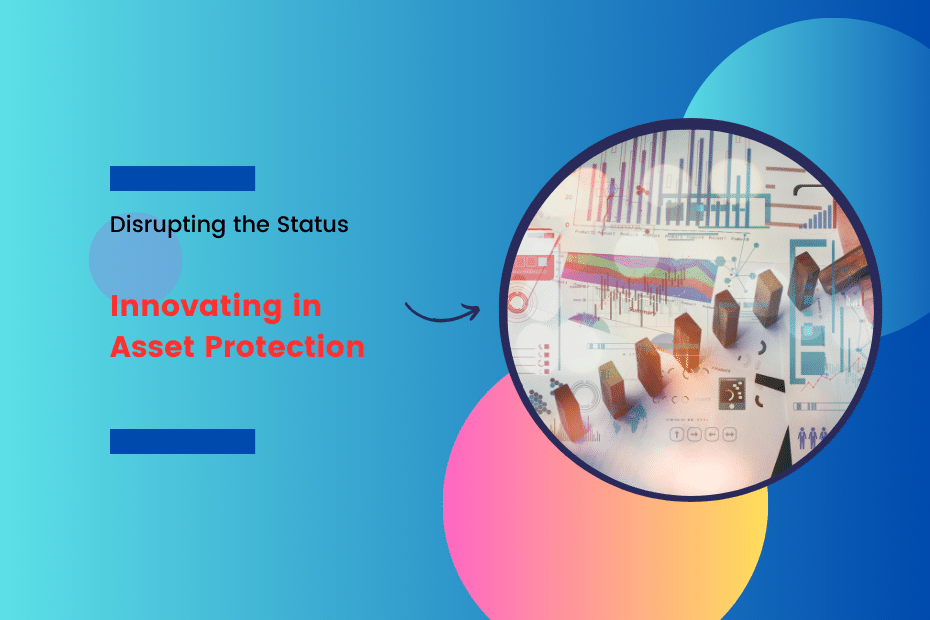Asset protection has long been a cornerstone of financial and legal planning, aimed at safeguarding an individual’s or organization’s assets from potential threats, including lawsuits, creditors, and fraud. Traditionally, strategies like the formation of trusts, offshore accounts, and holding companies have been employed to shield assets from being unjustly or easily accessed. However, the landscape of asset protection is undergoing a significant transformation, driven by the emergence of new challenges and rapid technological advancements. The digital age has not only expanded the types of assets requiring protection—with financial assets, real estate, intellectual property, and digital assets all coming under the umbrella of asset protection—but also the methods through which these assets can be compromised. As cyber threats grow more sophisticated and global regulations more complex, the necessity for innovation in asset protection strategies has never been more pronounced. This evolution calls for a proactive approach, leveraging new technologies and innovative legal frameworks to secure assets against the multifaceted risks of the 21st century.
Technological Advances Redefining Asset Protection
The advent of cutting-edge technologies such as blockchain, artificial intelligence (AI), and advanced cybersecurity measures is fundamentally reshaping the field of asset protection. Blockchain technology, known for its pivotal role in the creation of cryptocurrencies, offers unprecedented opportunities for securing digital transactions and assets through its decentralized, tamper-proof ledger system. For example, the use of blockchain for creating smart contracts enables automatic execution of contractual terms when conditions are met, reducing the risk of fraud and breaches.
Artificial intelligence and machine learning are being harnessed to predict and identify potential threats to assets, from identifying unusual transaction patterns that may indicate fraud to automating the monitoring of intellectual property rights online. Moreover, AI-driven cybersecurity platforms can provide dynamic, real-time defense against cyber attacks, safeguarding digital assets ranging from sensitive personal data to digital intellectual property.
Together, these technological innovations are creating a more robust and responsive infrastructure for asset protection, enabling individuals and organizations to stay one step ahead of potential threats. By integrating these technologies into their asset protection strategies, they can enhance the security and privacy of their assets, ensuring that their wealth and intellectual property remain protected in an increasingly digital and interconnected world.
The Role of Legal Innovations
In parallel with technological advancements, the legal landscape surrounding asset protection has also evolved, introducing new frameworks and regulations aimed at more effectively securing assets. Innovations in legal structures have become instrumental in offering enhanced protection features, adapting to the complexities of modern financial and business environments. For instance, specialized trusts, such as Domestic Asset Protection Trusts (DAPTs) and Spousal Lifetime Access Trusts (SLATs), have gained popularity in the United States. These trusts offer a higher degree of protection against creditors and legal judgments, allowing for the safeguarding of assets while retaining a certain level of control and access by the settlor.
Moreover, corporate formations like Limited Liability Companies (LLCs) and Limited Partnerships (LPs) have been optimized for asset protection. These entities can be structured to provide a shield for personal assets from business liabilities, while also offering tax efficiencies. On an international scale, jurisdictions known for their robust asset protection laws have updated their legislations to cater to global citizens, incorporating features that address concerns over privacy, asset control, and succession planning.
The evolution of these legal innovations underscores the importance of staying informed about and compliant with the latest legal developments. By leveraging these innovative legal structures, individuals and organizations can create a fortified barrier around their assets, tailored to the modern threat landscape and regulatory requirements.
Adapting to the Digital Transformation
The digitization of assets, marked by the rise of cryptocurrencies, digital intellectual property, and online financial transactions, has introduced both unprecedented opportunities and challenges. While digital assets offer ease of transfer, increased accessibility, and new investment avenues, they also present unique vulnerabilities, particularly to cyber threats. Safeguarding these assets requires a multifaceted approach, blending technological solutions with digital literacy.
One strategy for protecting digital assets involves the use of cold storage solutions for cryptocurrencies, which keep private keys offline and out of reach from online hackers. Additionally, employing digital rights management (DRM) technologies can help protect digital intellectual property from unauthorized access and distribution. However, technology alone is not sufficient. Digital literacy plays a crucial role in asset protection, as understanding the mechanisms behind digital assets, the nature of cyber threats, and the best practices for online security can significantly reduce the risk of asset compromise.
Moreover, regulatory bodies worldwide are beginning to recognize the importance of protecting digital assets, enacting laws and guidelines that mandate certain security standards and reporting requirements. For asset owners, staying abreast of these regulations and implementing recommended security measures is vital.
Success Stories in Innovative Asset Protection
Innovative asset protection strategies are not just theoretical; they have been successfully implemented by various individuals and organizations, significantly enhancing their security posture and asset integrity.
The Use of Blockchain for Real Estate Titles
A pioneering example is the use of blockchain technology to protect real estate assets. In countries like Georgia and Sweden, blockchain has been trialed for recording land titles, making the records immutable and transparent. This technology reduces the risk of fraud and disputes over land ownership, providing a robust layer of protection for property assets.
AI-Driven Cybersecurity in Financial Institutions
Another success story is JPMorgan Chase’s deployment of artificial intelligence in cybersecurity. The bank uses AI to monitor and analyze threats in real-time, protecting financial assets from cyber-attacks. This proactive approach has significantly improved its defense mechanisms, showcasing the potential of AI in safeguarding digital and financial assets.
Future Trends in Asset Protection
The landscape of asset protection is continuously evolving, with new technologies emerging and potential threats diversifying. Blockchain and AI, already making significant impacts, are expected to become more prevalent in creating secure, transparent systems for asset management and protection. Additionally, the rise of quantum computing presents both a challenge and an opportunity; while it may render current encryption methods obsolete, it also promises the development of virtually unbreakable encryption techniques.
Moreover, the growth of the Internet of Things (IoT) expands the perimeter that needs safeguarding, introducing complex security considerations for digital and physical assets alike. As digital assets like cryptocurrencies and NFTs (Non-Fungible Tokens) become mainstream, developing sophisticated strategies to protect these assets against theft and fraud will be crucial. The future of asset protection lies in the intersection of legal innovation, technological advancement, and strategic adaptation, requiring constant vigilance and innovation to stay ahead of threats.
Conclusion: Embracing Innovation in Asset Protection
Innovation plays a critical role in disrupting the status quo of asset protection, equipping individuals and organizations with the tools to safeguard their assets against an ever-expanding array of threats. The journey of asset protection is marked by a constant need for evolution, adapting to technological advancements and emerging challenges. As we move forward, embracing innovation, seeking out cutting-edge solutions, and fostering a culture of continuous learning and adaptation will be essential in securing assets in a complex and digitalized world. The future of asset protection demands a proactive stance, ready to leverage new technologies and strategies to protect the invaluable assets that form the foundation of our personal and professional endeavors.

Thomas J. Powell is the Senior Advisor at Brehon Strategies, a seasoned entrepreneur and a private equity expert. With a career in banking and finance that began in 1988 in Silicon Valley, he boasts over three and a half decades of robust experience in the industry. Powell holds dual citizenship in the European Union and the United States, allowing him to navigate international business environments with ease. A Doctor of Law and Policy student at Northeastern University, he focuses on middle-income workforce housing shortages in rural resort communities. He blends his professional acumen with a strong commitment to community service, having been associated with the Boys and Girls Clubs of America for over 45 years. Follow Thomas J Powell on LinkedIn, Twitter,Crunchbase.

